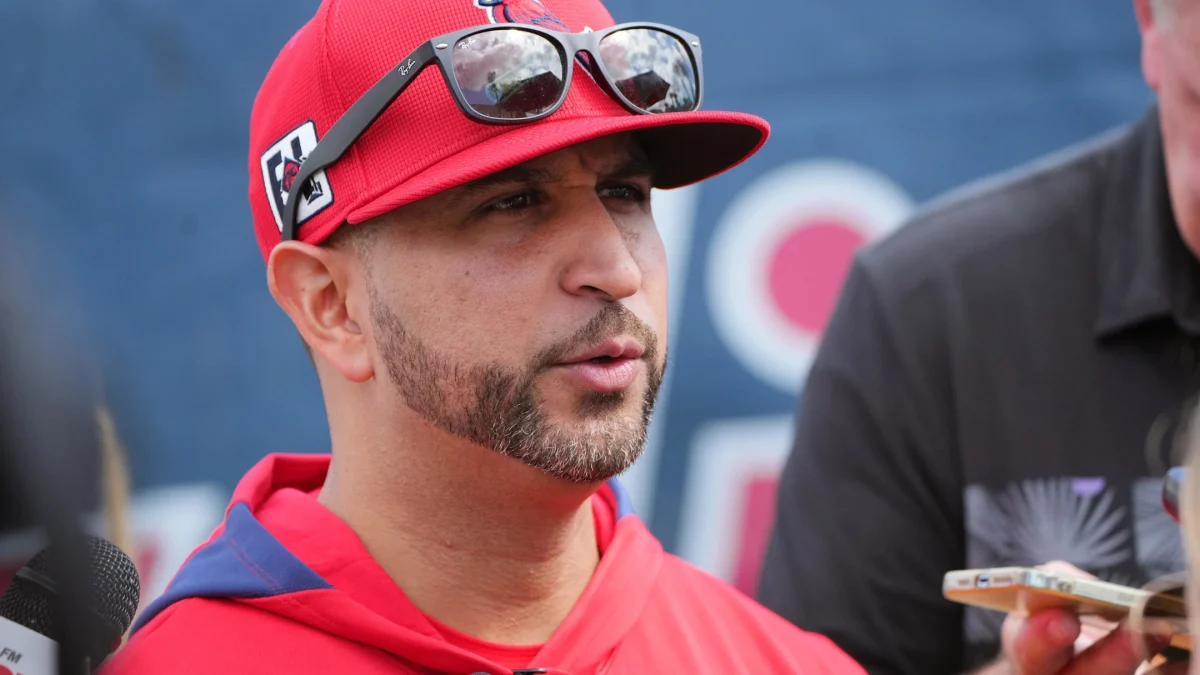Compartment syndrome is a nuisance no matter who you are. It hurts-blood flow is significantly restricted in the affected area with sometimes damaging repercussions, including potential nerve damage.
But it especially hurts if you happen to have a running scholarship at Saint Louis University and long term aspirations of competing at the Olympic Trials. Just ask sophomore Brian Holdmeyer, SLU’s top distance runner.
There are numerous potential causes of compartment syndrome, including overexertion of muscles. Naturally, this was the case for Holdmeyer.
In mid-December, Holdmeyer started to feel the effects of compartment syndrome. The persistent pain he endured in his right leg remained a mystery for the next several weeks.
“It became an issue the week before we left for winter break. We didn’t figure out what it was for sure until the first week of February,” Holdmeyer said.
On Feb. 11, Holdmeyer went into surgery to repair his compartmental syndrome.
“His surgery lasted all of about 10 minutes-recovery could take up to six months,” Head Track and Field Coach Jon Bell said.
The road to recovery will be a painful waiting game for Holdmeyer. “I’ve gone about four and a half months of not consistently training-that’s by far the longest I’ve ever gone without being able to train every day,” Holdmeyer said.
Holdmeyer is redshirting this season, but it isn’t necessarily because of his injury. In fact, it was decided that Holdmeyer would redshirt as the end of the cross country season approached last fall. Bell helped him with the decision.
“After the cross country season ended, I talked to the coach about [redshirting]. We’re holding the Atlantic 10 [Cross Country] Championships next year in Forest Park. I talked to [Bell] about the possibility of redshirting to up my aerobic,” Holdmeyer said.
According to Bell, Holdmeyer would not have redshirted this season if SLU was contending for the A-10 championship. But this was not the case, so Holdmeyer’s contributions would not have served a significant purpose in terms of team standings.
The decision also was designed to give Holdmeyer the opportunity to focus on long-distance, cross country oriented training.
“In track, the training would have been more focused on speed work, whereas by redshirting I would be able to build up my mileage and get stronger for the 8k and 10k distances,” Holdmeyer said.
But due to his injury, Holdmeyer’s plans to train exclusively for the upcoming cross country season were setback. It was, as Bell describes it, a serious curve ball thrown at meticulous plans.
“He has serious aspirations of running in the Olympic trials. At some point he’s going to have to bite the bullet and run 110 miles a week. So he thought, ‘let’s do it now.’ He was on board with that,” Bell said.
Instead of undergoing a period of intensive training, Holdmeyer can be seen taking splits and helping out at track practices.
“I show up every day,” Holdmeyer said. “I’m helping out with the little things that you don’t worry about when you are running. It’s like you’re a team manager.”
That means someone who can run the mile in 4:24 is on the sidelines every day.
Holdmeyer is probably the most glorified manager in the Atlantic 10,” Bell said. “You don’t have too many USA Track and Field All-American managers. He’s getting to see things through my eyes for a change.”
He is also passing the time by continuing upper-body lifts, the only exercise he has been cleared to do at this point.
“It’s frustrating, but it’s nice to take a step back. It gives you that competitive edge back,” Holdmeyer said. “I kind of have to look at all this like I’m getting something out of it.”
There are some positive aspects of his injury, frustrating as it may be.
“He’s starting to have a better understanding of physiology and biomechanics. Ultimately those are things that will be important to him. He’ll now have an understanding of what we’re trying to accomplish-now he’ll know what the goal is,” Bell said.
Bell also said the injury gives Holdmeyer time to reflect on what is really important.
“I think this injury has actually allowed him to focus on day-to-day type activities. I feel like it’s also gave him the chance to stop and think about what he is trying to accomplish. He still goes to practice every day. He’s starting to get the intellectual side of things, the science side of things.”
In the meantime, Holdmeyer is still on track to be ready to run once the cross country season starts up next fall.









